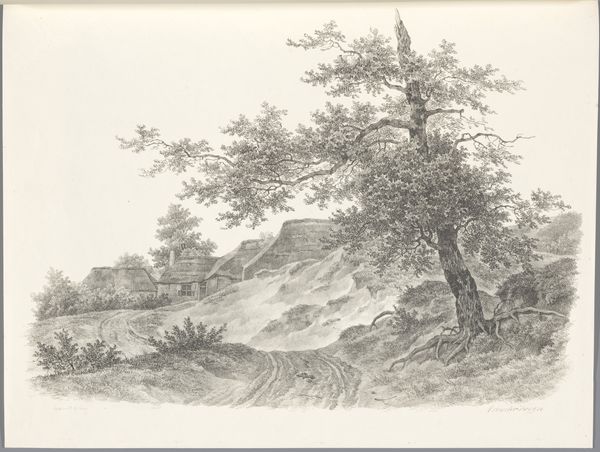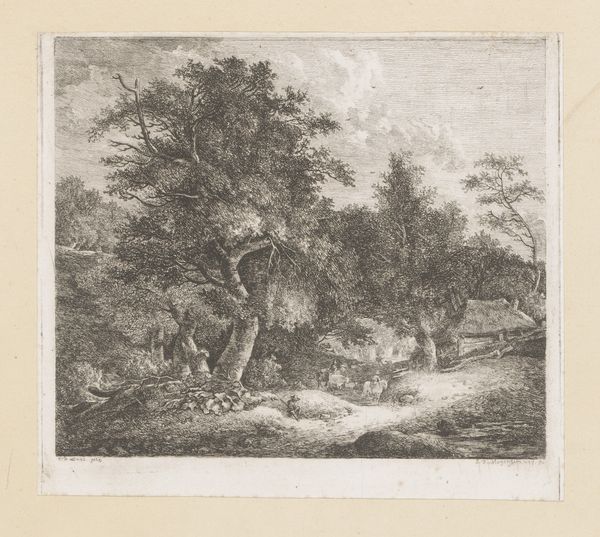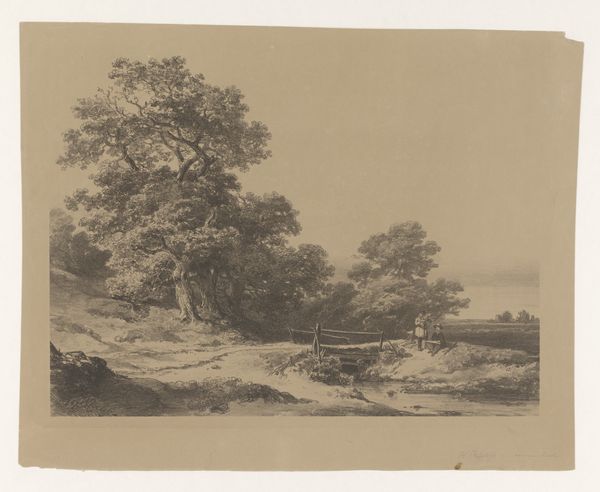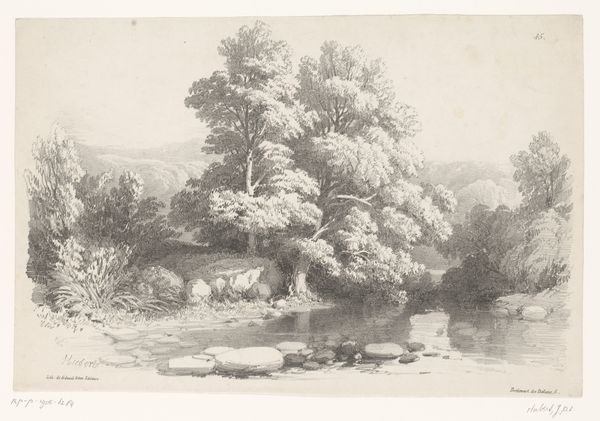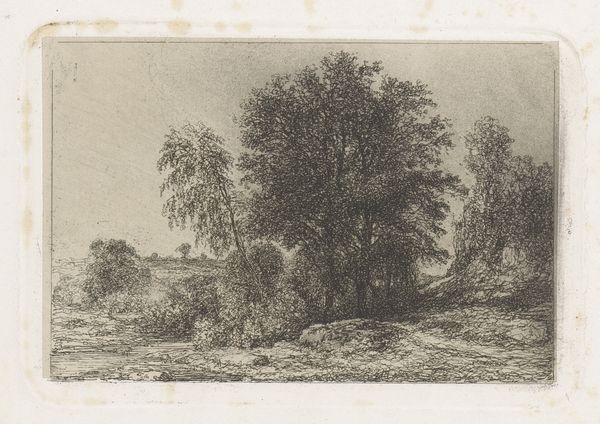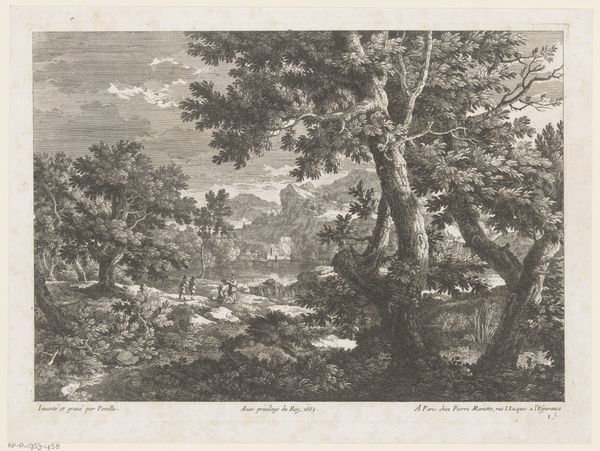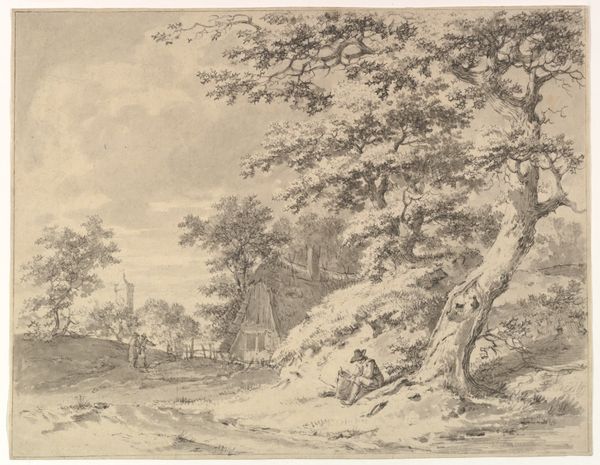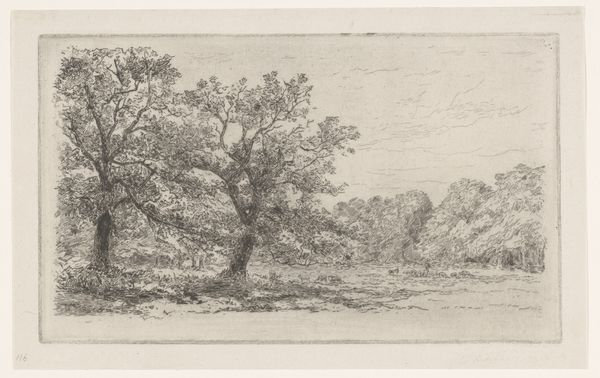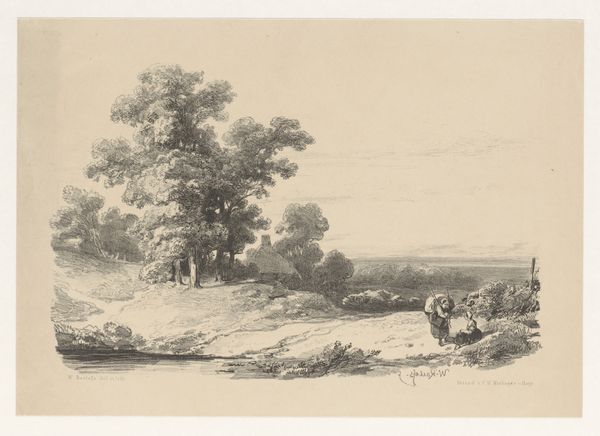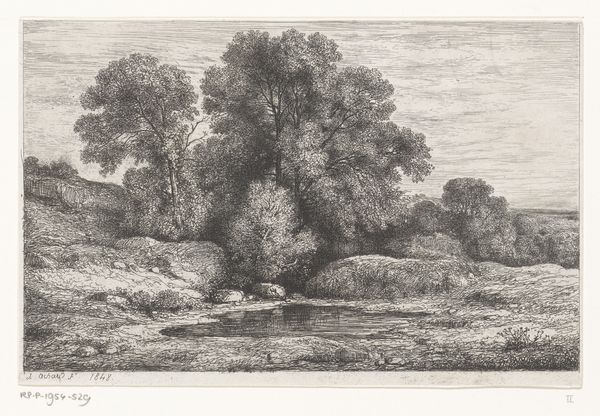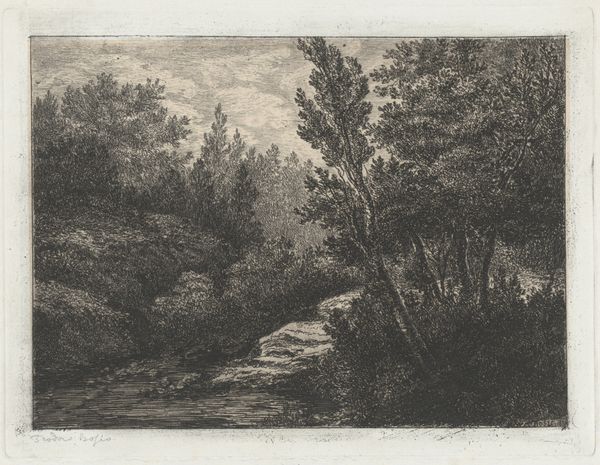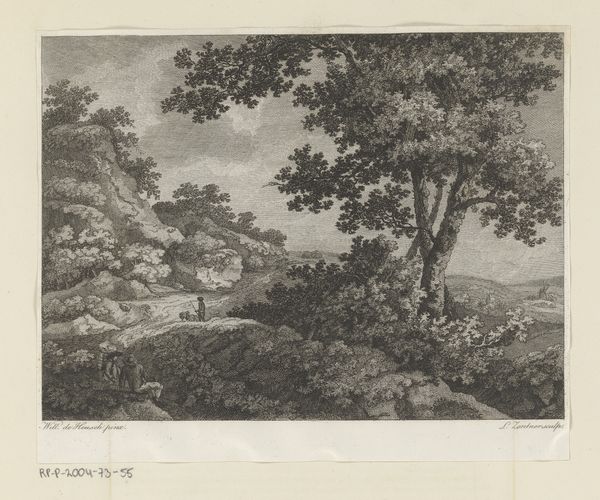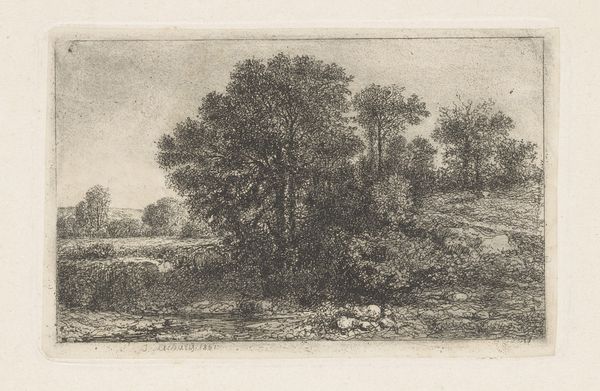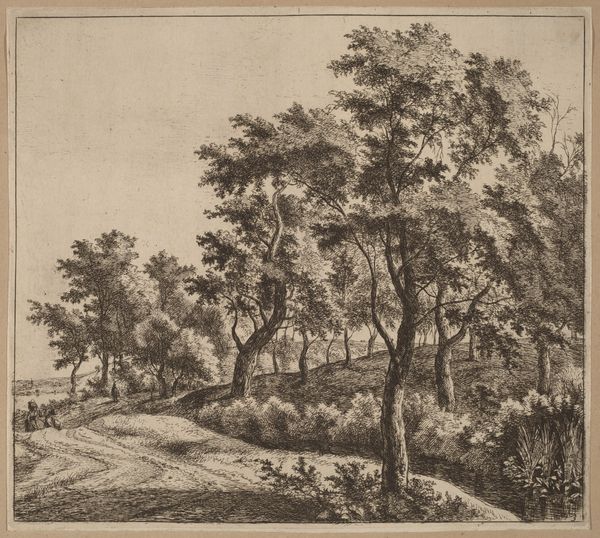
The Edge of the Woods, near Rambouillet 1860
0:00
0:00
Dimensions: Sheet: 12 1/2 × 19 1/16 in. (31.7 × 48.4 cm) Plate: 10 1/4 × 14 3/16 in. (26 × 36.1 cm)
Copyright: Public Domain
Curator: It’s immediately striking, isn’t it? Almost gothic in its rendering of the woods, especially considering it’s daytime. The density of the trees looms. Editor: It is evocative. What we have here is Eugène Bléry's "The Edge of the Woods, near Rambouillet" created around 1860. It is an etching, currently held at the Metropolitan Museum of Art. It offers an interesting snapshot into mid-19th century landscape art, as we consider how the genre reflects social perspectives of nature. Curator: Social perspectives? Tell me more about that. I read this as an example of romanticism, given its awe-inspiring representation of nature... its powerful evocation of something just beyond our grasp, especially with that building further in. Editor: Certainly. Romanticism is definitely present in the overall impression. But consider that Rambouillet was and is a notable forest near Paris, and that landscape art itself had become increasingly popular. Bléry doesn't present untouched wilderness; instead, there's a subtle tension between human presence, evidenced by the buildings, and this dominating wilderness, one increasingly being experienced by leisure seekers. The emerging middle class and ideas of property ownership shape even our vision of nature. It highlights evolving concepts of urbanization and its influence in representations of rural space. Curator: That adds a compelling layer to it, making me think about property and access, who got to experience such landscapes. Those tiny figures walking away by that house gain new meaning. Is it too much of a stretch to see a power dynamic playing out within this image? Editor: Power dynamics are never absent, and certainly, here they're subtly interwoven. By focusing on an “edge,” Bléry also shows us a threshold. We must remember too, the rise of printmaking like this was expanding artistic reach. Though it portrays a specific place, its symbolism touches upon broader shifts occurring at the time in class structures, land usage, and leisure itself. Curator: Fascinating. So, while seemingly a serene landscape, it mirrors a complex cultural shift. Looking closely, I see how expertly Bléry uses etching to create light, almost sculpting the forest, creating this interplay between a dominating nature and an encroaching humanity. Editor: Indeed. Bléry offers a potent visual artifact. Analyzing the seemingly peaceful vista opens up a more intricate picture.
Comments
No comments
Be the first to comment and join the conversation on the ultimate creative platform.
